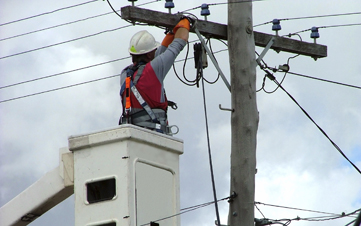8 Promising Stocks Under $10
In a red-hot stock market, it’s hard to argue that much is cheap these days.


In a red-hot stock market, it’s hard to argue that much is cheap these days. That may drive some frustrated investors toward the nominally cheap -- stocks with single-digit share prices. But as many veteran investors know, the realm of low-priced stocks is filled with a lot of struggling businesses that are unlikely to ever amount to much.
We searched for the exceptions and found eight companies with intriguing prospects and share prices under $10. They’re all highly speculative -- meaning you have to be prepared to lose every dime. But they also have the potential to pay off big over time for investors who can handle extreme short-term volatility.
Share prices and related data are as of November 18; unless otherwise noted, price-earnings (P/E) ratios are based on the average of analysts’ estimates for operating earnings in 2014, as reported by Thomson Reuters.

Cerus
- 52-week range: $2.90-$7.13
- Market capitalization: $405 million
- 2012 revenue: $37 million
- 2012 loss: $15.9 million, or $0.33 a share
- Estimated 2013 loss per share: $0.63
- Estimated 2014 loss per share: $0.35
- P/E ratio: Not applicable
Some investors left Cerus (symbol CERS, $5.75) for dead in 2009, when the stock traded for less than a buck. But the shares have since surged more than sixfold because of renewed optimism over the biomedical company’s growing blood-safety business. Cerus’s “Intercept” system cleans blood platelets and plasma in donated blood of a range of viruses, bacteria and parasites, including West Nile virus and influenza. Cerus has been selling Intercept in Europe and Russia for years. Now Cerus is seeking U.S. government approval to market the Intercept system domestically. The company also is developing a similar technology to clean red blood cells. Analysts at Cowen & Co., one of Cerus’s financial advisers, say they expect Intercept to become “the gold standard for blood transfusion safety globally.”
The Concord, Cal., company’s total revenue is expected to reach about $42 million this year, nearly double 2010 results. For now, though, Cerus is still running deficits because of heavy spending on research and marketing. The company had an operating loss of $8.4 million on revenue of $10.5 million in the third quarter. A plus is that Cerus has relatively little debt, though investors will have to keep a wary eye on how quickly the company burns cash.

CryoLife
- 52-week range: $5.52-$10.36
- Market capitalization: $274 million
- 2012 revenue: $132 million
- 2012 earnings: $7.9 million, $0.28 a share
- Estimated 2013 earnings per share: $0.31*
- Estimated 2014 earnings per share: $0.38
- P/E ratio: 26
- CryoLife (symbol CRY, $9.94) has built a business preserving and providing implantable living human tissues for use in cardiac and vascular surgeries, including heart-valve replacements. Revenue has risen steadily for the past decade and reached $105 million in the first nine months of this year, up 6.5% from a year earlier. Profit in the period was $7.1 million, or 25 cents a share, up 22% from a year earlier. Earnings growth, however, has been erratic in recent years, which is why the stock mostly bounced between $4 and $6 since 2009.
More recently, though, investors have started to take a closer look at CryoLife’s technologies, including its BioGlue surgical adhesive and its PerClot product, which is used to control bleeding in surgery. PerClot, which is already selling briskly in Europe, is awaiting approval from U.S. and Japanese regulators.
Unusual among small medical-products firms, CryoLife has a strong balance sheet. The Kennesaw, Ga.-based company has no debt, and its board of directors feels confident enough about cash flow to authorize a modest quarterly dividend.
*excludes one-time gain of $0.29 from asset sales

Dyax
- 52-week range: $2.26-$8.76
- Market capitalization: $950 million
- 2012 revenue: $55 million
- 2012 loss: $29.3 million, or $0.30 a share
- Estimated 2013 loss per share: $0.28
- Estimated 2014 loss per share: $0.15
- P/E ratio: Not applicable
- Dyax (symbol DYAX, $7.85) is a bet on new drug development via a technology known as phage display, which identifies proteins and antibodies that can help treat specific diseases. Dyax was a pioneer in the technology and now has 13 drugs in research stages with bigger partners. One drug under development with giant Eli Lilly would treat gastric cancer. So far, most of Dyax’s revenue comes from sales of Kalbitor, which is used to treat hereditary angioedema, a rare disease that causes severe swelling in the extremities and respiratory and gastrointestinal systems.
Although Kalbitor is profitable, high research costs for other drugs are keeping Dyax in the red. The Burlington, Mass., company lost $25.8 million in the first nine months of 2013 on revenue of $37 million. But Wall Street already has shown a lot of faith in Dyax’s future: The stock has nearly tripled from its low this year, driving the company’s market value to a lofty $1 billion, or 18 times sales. And a recent stock offering helped significantly bolster Dyax’s piggy bank, boosting cash on the balance sheet to $112 million.

Global Sources
- 52-week range: $5.55-$8.48
- Market capitalization: $265 million
- 2012 revenue: $232 million
- 2012 earnings: $32 million, or $0.90 a share
- Estimated 2013 earnings per share: $0.98
- Estimated 2014 earnings per share: Not available
- P/E ratio: Not available
Trade show and Web site operator Global Sources (symbol GSOL, $7.31) is a play on the continuing growth of trade between China and the rest of the world. At the moment, given concerns about the weak pace of both the global economy and China’s exports, this isn’t a popular stock: Its shares are around the same level they were in mid 2009, even though first-half earnings were about double their level in the same period of 2009.
Global Sources earns fees by linking global buyers of goods with Asian suppliers. It does so via Web sites, trade shows and other channels that bring businesses together. The company’s basic approach is dubbed “Find Them and Meet Them,” referring to online business-to-business introductions that are then followed by personal interaction at trade shows in Hong Kong (where the company is headquartered), Miami, New Delhi and other locations. In a tough marketplace, Global Sources says it is pushing ahead with new ventures, including a mobile and wireless telecom show in Hong Kong next April.
The company has a 43-year history of profitability. Revenues reached a record $232 million in 2012 but were off 12% in the first half of 2013. Operating earnings were down about 10% in the half, to $13.2 million, or 37 cents a share. Although the near-term earnings outlook remains weak, Global Sources sports a solid balance sheet, with cash holdings of $135 million at mid-year.

JetBlue Airways
- 52-week range: $4.89-$8.89
- Market capitalization: $2.5 billion
- 2012 revenue: $5 billion
- 2012 earnings: $128 million, $0.40 a share
- Estimated 2013 earnings per share: $0.49
- Estimated 2014 earnings per share: $0.66
- P/E ratio: 13
Many pros have long shied away from airline stocks, unwilling to suffer through the industry’s stomach-churning cyclicality. But the sector has been hot in 2013. And if you can look out a few years, JetBlue Airways (symbol JBLU, $8.70) could generate handsome returns from current share-price levels -- if the company can deliver on promised cost controls. JetBlue’s passenger-friendly reputation helped fuel revenue growth of 52% between 2009 and 2012. It’s now carrying 30 million people a year in the U.S., Latin America and the Caribbean. But competition, high plane-maintenance costs and volatile fuel prices have made for uneven profit growth. Earnings in the quarter that ended September 30 jumped 58%, to $71 million, from the same period a year earlier. But for the first nine months of 2013, earnings were off 5%.
Though JetBlue, the biggest company on our list, continues to expand, it now is focusing more on efficiency by shifting to larger planes with better fuel economy. The New York–based airline also plans to add premium seating on cross-country flights. Wall Street remains suspicious about profit potential, which is why the stock’s price-earnings ratio is below those of rivals Southwest Airlines and Spirit Airlines. But that also could mean opportunity.

Kratos Defense & Security Solutions
- 52-week range: $4.08-$9.16
- Market capitalization: $396 million
- 2012 revenue: $969 million
- 2012 loss: $114 million, or $2.44 per share
- Estimated 2013 earnings per share: $0.15
- Estimated 2014 earnings per share: $0.57
- P/E ratio: 12
Through acquisitions, Kratos Defense & Security Solutions (symbol KTOS, $6.95) has tripled in size since 2009, with annual sales now about $1 billion. The bulk of its business is with Uncle Sam in defense sectors such as cybersecurity and drones. But the San Diego–based company has focused increasingly on fast-growing and potentially more-profitable homeland-security businesses, including surveillance, for clients such as cities and mass-transit systems.
The trick will be turning hefty sales into consistent profit growth. One boost should come from a planned refinancing of the $650 million in debt the company used to finance its takeover spree. The company says a refi should cut the interest rate on its debt by at least three percentage points. That could help profits more than double in 2014. A looming challenge is the threat of further federal budget cuts under sequestration. In the longer term, though, Kratos’s buying binge has enabled the company to “really round out its portfolio of businesses,” says Michael Ciarmoli, defense-industry analyst at KeyBanc Capital Markets, the investment-banking arm of Cleveland-based KeyBank. That also could make Kratos a takeover target itself, he says.

S&W Seed
- 52-week range: $4.82-$11.40
- Market capitalization: $56 million
- Fiscal 2013 revenue (year ended June 30): $37 million
- Fiscal 2013 loss: $678,000, or $0.08 a share
- Estimated fiscal 2014 earnings per share (year ending June 30): $0.15
- P/E ratio: 32
- S&W Seed (symbol SANW, $4.86) is a high-risk niche play in the global agricultural business. The Five Points, Cal., company produces alfalfa seed varieties for farmers worldwide. S&W, which came public in 2010 but has been operating in California’s Central Valley since 1980, says it has developed the “highest yielding, most salt-tolerant” seed for so-called non-dormant alfalfa, meaning the kind grown in arid climates. Alfalfa hay is a favored forage for livestock, including beef and dairy cattle. So S&W seeks to cash in on the developing world’s growing demand for meat and dairy products. Besides alfalfa, the company is experimenting with breeding the stevia plant, a natural noncaloric sweetener.
Over the past year, S&W mushroomed in size via the acquisition of seed producers in Australia and in California’s hot low-desert growing region, the Imperial Valley. S&W’s revenue was $37 million in the fiscal year that ended June 30, but high expenses left the firm with a $678,000 operating loss in the period, before one-time charges.
S&W is an idea only for gutsy speculators: Not only is the company tiny (it’s the smallest of our choices), it faces myriad major risks, including intense competition from bigger rivals, heavy dependency on farmers in the Middle East and, of course, the vagaries of weather.

Willbros Group
- 52-week range: $4.54-$10.45
- Market capitalization: $448 million
- 2012 revenue: $2 billion
- 2012 loss: $30 million, or $0.63 a share
- Estimated 2013 loss per share: $0.35
- Estimated 2014 earnings per share: $0.76
- P/E ratio: 12
- Willbros Group (symbol WG, $9.00) proved five years ago that it could attract a following on Wall Street. After a distressing run of red ink since 2009, the Houston-based energy-services company wants to try again. Willbros, which is more than a century old, has worked to diversify itself away from dependence on the volatile oil- and gas-pipeline-construction business. Now it’s emphasizing services such as storm-damage restoration for electric utilities and maintenance of storage tanks for energy companies operating in Canada’s booming oil-sands sector. The Canadian unit alone posted a 152% jump in revenue in the first nine months of 2013, to $324 million.
Willbros overall is still spilling red ink. But analysts see the company swinging from a loss of 35 cents a share in 2013 to profits of 76 cents a share in 2014. That would be Willbros’s best performance since 2008, when its shares topped $47. Don’t expect the stock in that rarefied atmosphere soon, but if the company succeeds in continuing to build up the services part of the business, Willbros will be “positioned in a market area with favorable long-term growth prospects,” says John Rogers, an analyst at brokerage D.A. Davidson & Co.

More From Kiplinger
SLIDE SHOW: The 7 Deadly Sins of Investing
SLIDE SHOW: The Dow 30: Which Stocks to Buy, Hold or Sell
SLIDE SHOW: 8 Ways to Profit From Dividend Stocks
Profit and prosper with the best of Kiplinger's advice on investing, taxes, retirement, personal finance and much more. Delivered daily. Enter your email in the box and click Sign Me Up.

-
 Fed's Rate Cuts Could Have Impacts You Might Not Anticipate
Fed's Rate Cuts Could Have Impacts You Might Not AnticipateUnderstanding how lower interest rates could impact your wallet can help you determine the right financial moves to make.
-
 Past Performance Is Not Indicative of Your Adviser's Expertise
Past Performance Is Not Indicative of Your Adviser's ExpertiseMany people find a financial adviser by searching online or asking for referrals from friends or family. This can actually end up costing you big-time.
-
 I'm want to give my 3 grandkids $5K each for Christmas.
I'm want to give my 3 grandkids $5K each for Christmas.You're comfortably retired and want to give your grandkids a big Christmas check, but their parents are worried they might spend it all. We ask the pros for help.
-
 The 24 Cheapest Places To Retire in the US
The 24 Cheapest Places To Retire in the USWhen you're trying to balance a fixed income with an enjoyable retirement, the cost of living is a crucial factor to consider. Is your city the best?
-
 5 Stocks to Sell or Avoid Now
5 Stocks to Sell or Avoid Nowstocks to sell In a difficult market like this, weak positions can get even weaker. Wall Street analysts believe these five stocks should be near the front of your sell list.
-
 Best Stocks for Rising Interest Rates
Best Stocks for Rising Interest Ratesstocks The Federal Reserve has been aggressive in its rate hiking, and there's a chance it's not done yet. Here are eight of the best stocks for rising interest rates.
-
 The Five Safest Vanguard Funds to Own in a Volatile Market
The Five Safest Vanguard Funds to Own in a Volatile Marketrecession The safest Vanguard funds can help prepare investors for market tumult but without high fees.
-
 The 5 Best Inflation-Proof Stocks
The 5 Best Inflation-Proof Stocksstocks Higher prices have been a major headache for investors, but these best inflation-proof stocks could help ease the impact.
-
 5 of the Best Preferred Stock ETFs for High and Stable Dividends
5 of the Best Preferred Stock ETFs for High and Stable DividendsETFs The best preferred stock ETFs allow you to reduce your risk by investing in baskets of preferred stocks.
-
 What Happens When the Retirement Honeymoon Phase Is Over?
What Happens When the Retirement Honeymoon Phase Is Over?In the early days, all is fun and exciting, but after a while, it may seem to some like they’ve lost as much as they’ve gained. What then?
-
 5 Top-Rated Housing Stocks With Long-Term Growth Potential
5 Top-Rated Housing Stocks With Long-Term Growth Potentialstocks Housing stocks have struggled as a red-hot market cools, but these Buy-rated picks could be worth a closer look.
